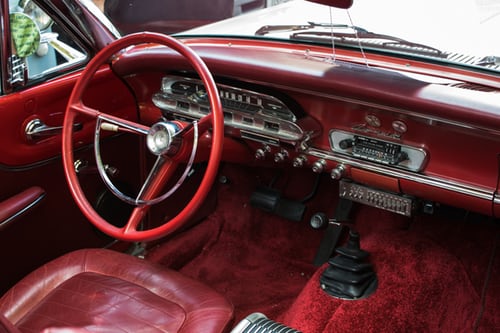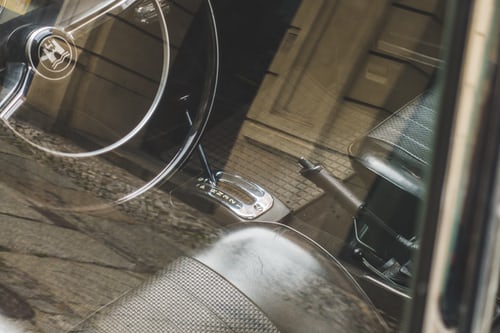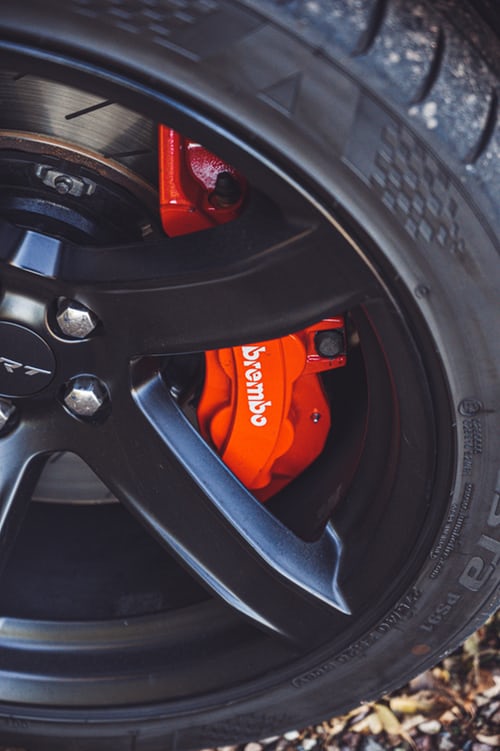Brakes that squeak, whistle, grind, squeal, slam or growl… It’s rather unpleasant and especially not reassuring!
If in 50% of cases these noises do not reveal any major problems or cause major breakdowns, it is very important, to eliminate any risk of danger and leave nothing to chance, to check (or have the suspicious element checked) carefully. Cleaning or changing a part will often be enough to remove the noise in question.
There is no need to specify the essential role of brakes in a car! So stay vigilant and attentive to the slightest alert… Here are some tips to help you easily identify the source of the problem.
1. It Squeaks When You Brake!
A squeak during braking is often due to clogging of the system.
Listen carefully and try to determine where the noise comes from! Front left or front right wheel? Rear right or rear left? Once the location has been detected and located, spray what is generally referred to as “brake cleaner” on the brake disc behind the wheel. It is a circular piece of metal with several holes drilled in it. It is a very effective product that can be found in car centers for only about ten dollars.
Note: if you want to clean the entire system for safety, feel free to remove the wheels! Brake hard 5 times in a row, when you restart the vehicle so that the product spreads well over all the parts.
2. It Looks like the Pedal Is Vibrating…

You hear a thumping noise when braking, accompanied by small vibrations on the pedal… It’s probably the brake disc that’s obscured! Since the surface of the disc is no longer completely flat, braking causes jerks that you feel directly under the sole.
By removing the wheels, you can easily observe the condition of the disc; the veil will be visible to the naked eye!
Important: Change the part immediately, as this malfunction could quickly damage the entire system.
3. Ow! Ow! the Wheel Growls…

When you drive, you hear a continuous squealing on one of the wheels that stops as soon as you depress the brake pedal?
Then one of your calipers is probably seized! This can happen if the brakes are not used often enough. Try several hard braking (safely of course…) to see if the noise persists. If this is the case, the sling bar will certainly have to be replaced. You will have to count for this about $150.
Note: Driving with a seized caliper, even a little bit, increases fuel consumption and overall brake wear. Don’t delay in fixing it!
4. You Can Hear a Scrap Metal Noise

A loud noise during braking makes you think of 2 steel sheets that you would rub against each other… It seems your platelets are dead! It is essential to deal with it quickly because driving with pads in poor conditions will necessarily cause damage to the discs. This can be dangerous and cause you to lose control of your vehicle, for example in the event of sudden braking!
On the other hand, your brake pad wear indicator on the dashboard should have alerted you. If it didn’t work, it may be because the small electrical wire (which starts from the pads and connects to the car) has broken. It’s quite common.
Warning: the pads can be changed on both axles (front or rear), i. e. on both sides. You cannot drive with new pads on the left and used pads on the right.
5. Squeaky Hand Brake…

The parking or parking brake, commonly known as a “hand brake”, which allows the car to be immobilized, acts through a lever operated by the driver. Often solicited, and with time, it can start squeaking…
Before having to replace the cables, it is important to maintain this system regularly! Spray lubricant (type WD40) at the base of the lever and operate the can several times in a row to distribute and circulate the oil.
Note: these are aerosols available in DIY stores for about $7.
The braking of a car is a rather complex device. It requires a certain number of checks and small attentions to allow it to last for a long time and to cost as little as possible…
Procedure for Adjusting the Hand Brake
The handbrake adjustment is checked at each overhaul and in the event that the stroke of the handbrake lever is too long. This verification is carried out in two places:
– under the chassis: It will require intervention under the vehicle to access the adjustment mechanism, which consists of an adjustable threaded rod, more rarely an adjustment on each wheel cable.
– in the passenger compartment: In this case, the adjusting screw is located near the hand brake lever, often requiring partial undressing or removal of the center console.
Faulty brakes can put your safety at risk and you should never neglect any suspicious noise! Whether they are disc or drum, I hope this post helps you determine what is going wrong with your brakes and what should be done. If you are looking for auto repair and maintenance services, Gilman Sport is a specialist in brake check and repair services in Scarborough, Pickering, and Markham.


2 comments
[…] – 5 Braking Noises: What to Check […]
[…] 5 Braking Noises: What to Check; […]